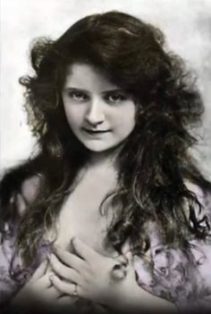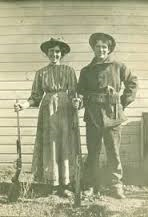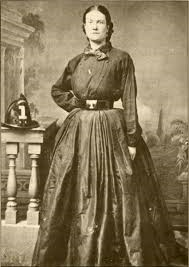Enter now for a chance to win a copy of
Wicked Women:
Notorious, Mischievous, and Wayward Ladies from the Old West.
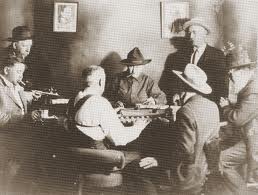
The faces around the poker table in “Poker Alice’s” gambling house in Deadwood, South Dakota, were nonchalant but their nonchalance only veiled excitement. Only the face of “Poker Alice” showed absolutely no flicker of tautness. She shifted her cigar to the other corner of her mouth and narrowly watched the face of the man holding the only hand, besides hers. All the others had tossed their cards in the center of the table. At last: “Well, I’ll see yah,” the man breathed and added another bag of gold dust to the small mountain of bags already in the center of the table. “What yah got, Alice?” “Then you ain’t going to raise me again?” Alice asked and lifted an eyebrow, shifting the cigar once more. “No? Well, it’s pretty full,” she said with a sweeping gesture displaying her cards. “Three aces and a pair of ladies. Beat that and the dust is yours.” “Take the pot,” her opponent ordered, and rose. He stomped disgustedly to the exit of the business and disappeared into the night.
Alice removed a gun from the folds of her skirt and placed it on the table in front of her. She considered the fact that the disgruntled gambler might walk back into the gaming hall and accuse her of cheating, and she wanted to be ready. It wouldn’t have been the first time Alice Ivers, more famously known as “Poker Alice,” shot a combative card sharp. While working at a gambling parlor in Deadwood in 1890, she successfully fended off a drunken miner who had pulled a knife on a fellow dealer.
A steady stream of prospectors, ranchers, and cowhands filtered in and out of a Deadwood saloon owned by a man named Bedrock Tom where Alice worked then. An inexperienced musician playing an out of tune accordion squeezed out a familiar melody ushering the pleasure seekers walking by the establishment inside. Burlap curtains were pulled over the dusty windows, and fans hung down from the ceiling and turned lazily. A distressed mahogany bar stood along one wall of the business, and behind it was a bartender splashing amber liquid into glasses as fast as he could. A row of table and chairs occupied the area opposite the bar. Every seat was filled with a card player. Poker Alice sat among a sea of male gamblers. She was alarmingly beautiful, fair-skinned, well-dressed, and slim. She had one eye on the cards she was dealing and another on the men at the game two tables down.
Warren G. Tubbs was studying the cards in his hands so intently he didn’t notice the hulk of a man next to him get up and walk around behind him. The huge man with massive shoulders and ham-like hands that hung low at his side peered over Warren’s shoulder and eyeballed the mountain of chips before him. Alice’s intensely blue eyes carefully watched the brute’s actions. She watched as he casually reached for his belt and produced a sharp knife from a leather sheath hanging off his waist. Just as he was about to plunge the weapon into Warren’s back, a gunshot rang out.
The frivolity in the saloon came to a sudden halt. A sick look filled the man’s face, and he slowly dropped the knife. Before dropping to his knees, he turned to see from which direction the bullet came. Alice stared back at him, her .38 pistol pointed at his head. The man collapsed face first onto the floor. His dead body was quickly removed to make way for another player. In a matter of minutes the action inside the tavern returned to normal. Warren caught Alice’s gaze and grinned. He nodded to her and waggled his fingers in a kind of salute. She smiled slightly and wholly turned her attention back to the poker game in front of her.
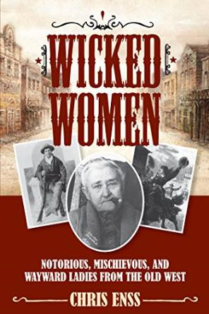
To learn more about the wild ladies on the frontier read
Wicked Women:
Notorious, Mischievous, and Wayward Ladies from the Old West.

